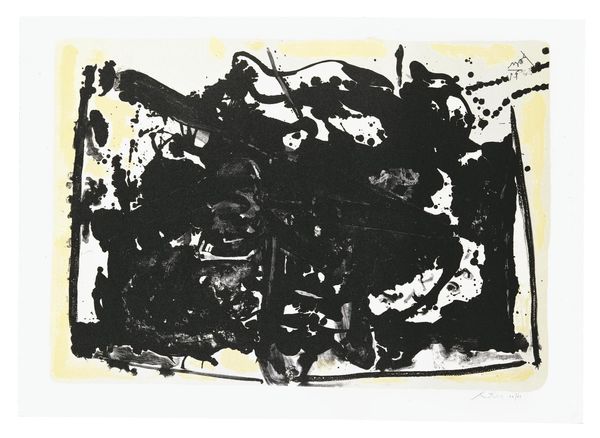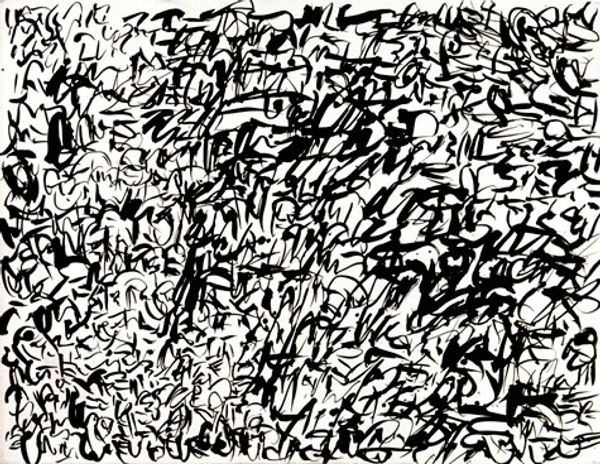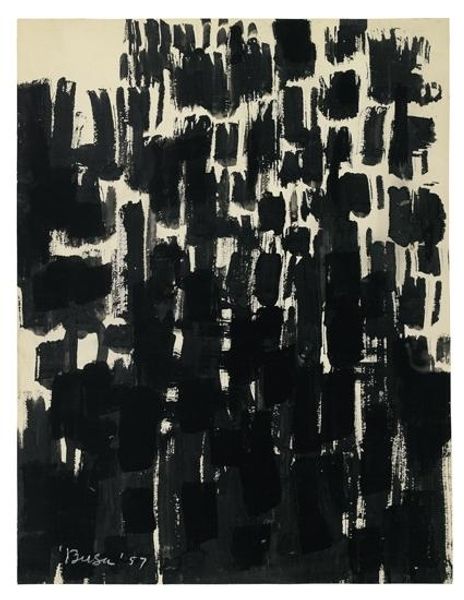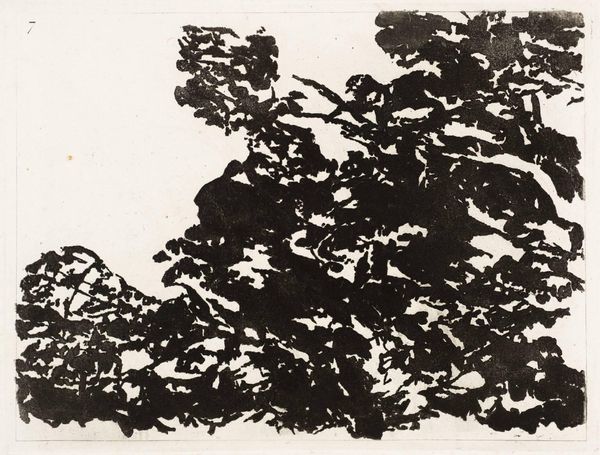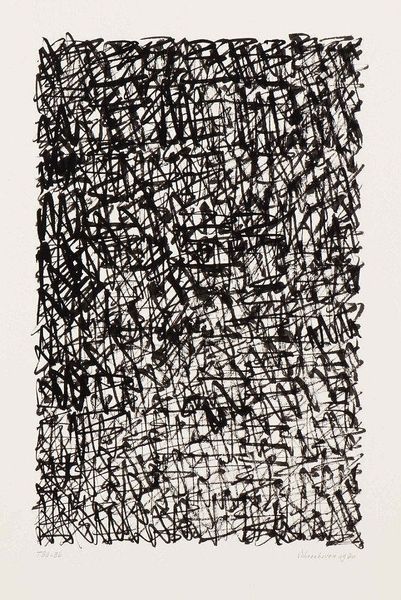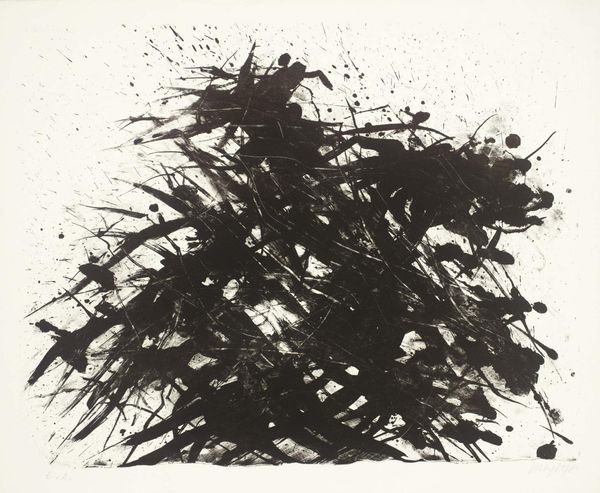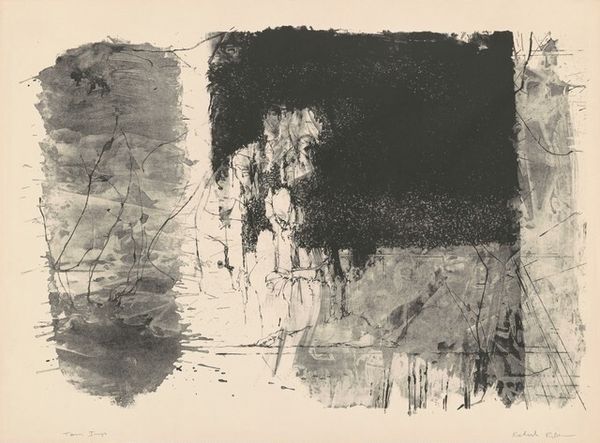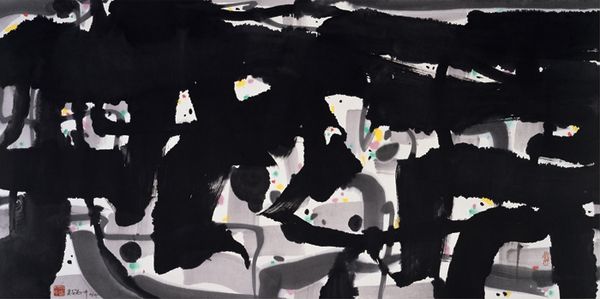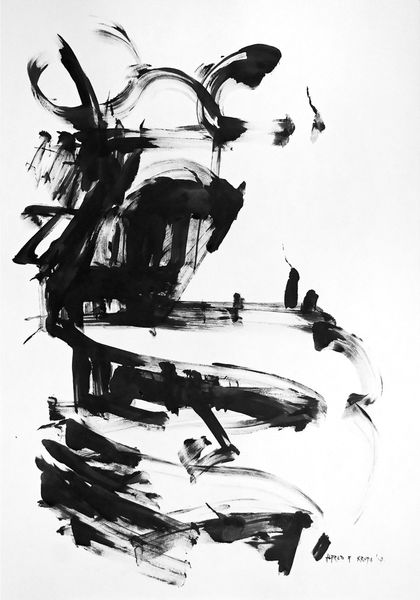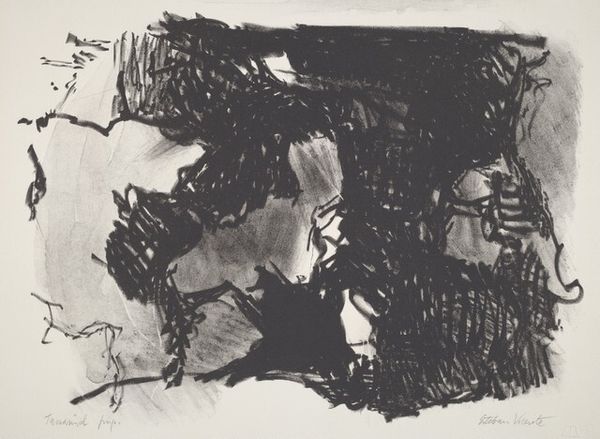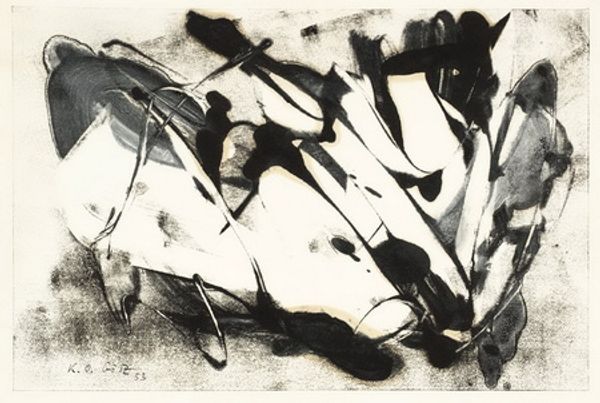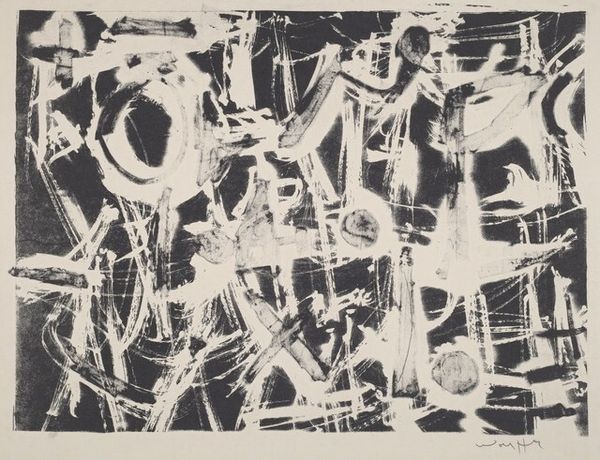
painting, oil-paint, gestural-painting
#
abstract-expressionism
#
painting
#
oil-paint
#
form
#
gestural-painting
#
abstraction
#
line
Copyright: Guido Molinari,Fair Use
Curator: This work is entitled "A Next... Amitie", crafted by Guido Molinari in 1958. It's an oil on canvas painting embodying the principles of Abstract Expressionism. Editor: Wow, it strikes me immediately as incredibly dynamic. The stark black slashes across the canvas create such a strong visual tension. Curator: The piece speaks to the artistic currents of the mid-20th century, a time where artists increasingly explored abstraction to express deeper societal and personal emotions in the post-war era. The gestural nature of the strokes suggests a spontaneity that defied conventional artistic practices. Editor: Absolutely, the density and direction of the lines lead the eye in multiple paths across the canvas, creating an internal rhythm. But it also creates a strong juxtaposition between figure and ground with the bare canvas pushing forward. The lines have a physical presence. Curator: Molinari, along with many artists from Montreal and across the world, was interested in challenging traditional power dynamics in art institutions. They used abstraction to escape the prescribed norms for image production, creating a new visual language, often very powerful like this piece. Editor: Thinking about the use of stark blacks and whites, it forces one to consider how fundamental forms can be so powerful. There's a very visceral sensation evoked through line and shape, like something stripped down to its purest form, only impactful. Curator: Molinari was concerned with pushing boundaries of the traditional painting establishment of the time. He participated actively in Montreal's artistic evolution. The work shows his engagement with the politics of form, style and freedom of expression. Editor: It’s amazing how such seemingly simple brushstrokes can result in such a composition, which remains vigorous today. The dynamism speaks for itself. Curator: I agree, and placing the work within the context of the post-war and Cold War eras further amplifies its commentary on artistic liberty. It showcases a drive towards individual and political expression, mirroring societal shifts. Editor: This piece remains intriguing and rewarding. Curator: Indeed, seeing it through that lens makes it all the richer.
Comments
No comments
Be the first to comment and join the conversation on the ultimate creative platform.
